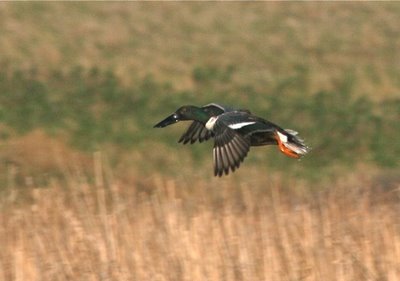 A shoveler glides in for a landing, bill still wet from his last dabble.
A shoveler glides in for a landing, bill still wet from his last dabble.Let's face it. Here in unglaciated southeast Ohio, we're starved for marshes. There are very few marshes, almost no natural lakes, and comparatively few opportunities to watch wetland wildlife. That's not to denigrate my beloved habitat; this blog is a celebration of all it HAS. But going to North Dakota is marsh immersion, and I love it.
I bring you marsh tidbits in this post. Marsh equals nursery in pothole country. Here, a massive creche of Canada geese from several broods.
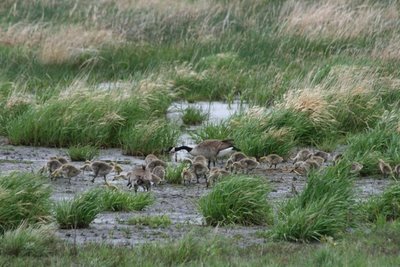
And a racing brood of little mallards, peeping for Mama.
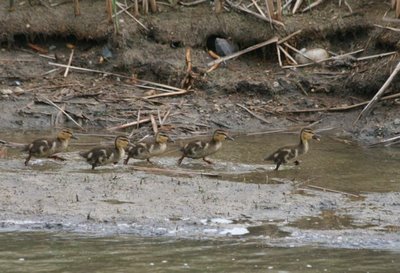
They take to the water, where they feel more comfortable.
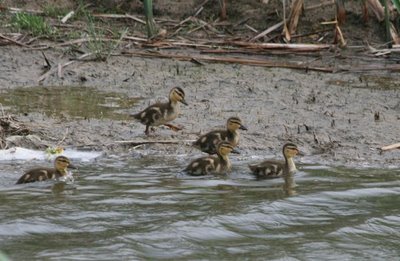
Their putative father? Who would know? Although I grew up on Robert McCloskey's Make Way for Ducklings, with its model of mallard monogamy, it's more likely that Dad's out looking for a receptive hen than helping to tend the brood.
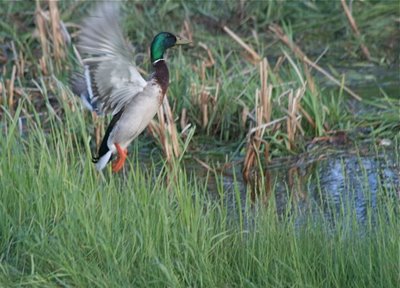
Overhead, snipe winnow, giving an otherworldly woo-woo-woo-woo that seems to be coming from nowhere and everywhere at once. They make the sound by channeling air from their beating wings into narrow, lanceolate outer tail feathers. They tip and tilt, side to side, and spread their tail as they tilt. The woo's occur at precisely the same time as the wings beat down. And the sound is produced. The bird straightens up, folds it tail in a normal flight position, and the sound ceases. In a magic moment, I was able to get everyone in the group on a winnowing snipe, predicting just when the sound would occur. And they understood, and it was beautiful.
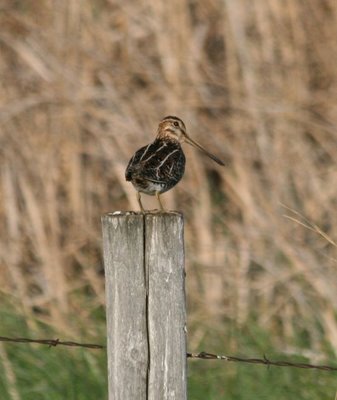 Everywhere, marsh wrens click and whir. Less frequently, the triple-click and burr of sedge wrens rings out.
Everywhere, marsh wrens click and whir. Less frequently, the triple-click and burr of sedge wrens rings out. 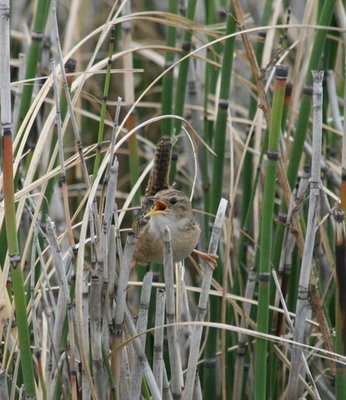
To me, they sound like a song sparrow with a head cold--dry and raspy, as if they were about to cough.
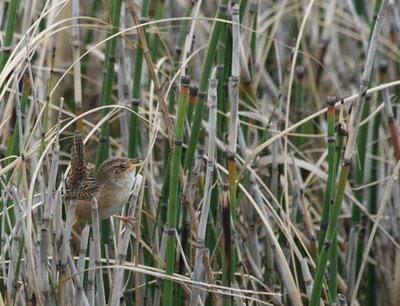
I love the straddly poses marsh birds have to adopt in order to perch in waving sedges, reeds and rushes. Boy, sedge wrens are cute, especially when they're mad.
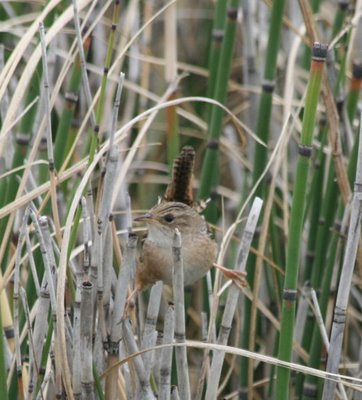 On the bison trip, we coaxed a Virginia rail into view with a recording of his grunting song. A sora popped up briefly but wouldn't oblige. While it bugs me to lure birds in with recordings, it makes me very happy to be able to show perhaps 35 people a rail, who would otherwise remain a mystery, and, after we're gone, will continue to be one.
On the bison trip, we coaxed a Virginia rail into view with a recording of his grunting song. A sora popped up briefly but wouldn't oblige. While it bugs me to lure birds in with recordings, it makes me very happy to be able to show perhaps 35 people a rail, who would otherwise remain a mystery, and, after we're gone, will continue to be one.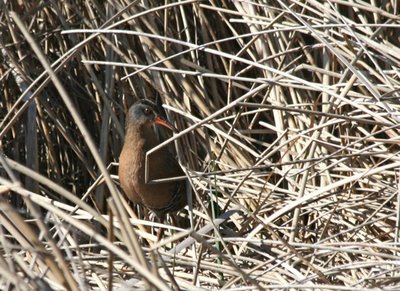
At least until next June, when it might be duped once again.






11 comments:
Just such a different variety of birds in the marsh areas. That wren is such a cutie!
Oh my, that shoveler!
Wow!
The wren appears to be amongst horsetail?
How appropriate, a modern dinosaur in a dinosaur plant.
Great post and informative as always. I had never heard of Canada Goose "nurseries." I'll have to do more research. Unless of course, you were joking. Either way, I will learn something.
I love those straddle poses, too. I expect them to beat their chests with their wings and do the Tarzan yell.
I'm loving your posts about ND, Julie. It was such a great trip! Looking at that Sedge Wren, I was reminded of how your DH struggled to help me see it. What a handsome little bird.
Make Way For Ducklings! I remember that as being one of our regular reads as young kids, and I still see it on bookstore shelves today - one of those kids' stories that has transcended generations.
Floridacracker, nice observation! That is Equisetum, all right. Liam is forever asking me if this or that bird is really related to T. Rex. I always reply in the affirmative.
NCMW, many waterfowl form creches. I'm not sure it's deliberate on the adults' part; the young just like to glom together, and one brood will race over and join another, and before you know it you see a common merganser hen with 42 little ones strung out behind her. I think it's beneficial for the parents to get a break now and then, and share duties. The young are precocial, feeding themselves from Day One, so it's not a huge burden for the nanny or nannies. And the broods then sort themselves back out. These tend not to be territorial birds; they just swim around hunting for good feeding grounds for their young, and it's no big deal when broods meld and part.BTW, wild turkeys creche, too, as do ostriches, to name just a couple of others.
SGN, he was spittin' mad! Wrens are intense little things.
Laura, I do believe that's your invisible sedge wren! Well do I know how it feels to have people practically yelling, "He's right THERE!"--how helpful!-- when I'm looking just beyond the bird, never expecting it to be practically underfoot. Glad you're digging the posts. I dug yours--beautiful writing.
McCloskey does describe the father mallard as absenting himself for a week: hence the happy reunion with which Make Way for Ducklings ends. He's completely discreet, however, about what may motivate that disappearance...
Nick,perhaps it's time for "Make Way for More Ducklings: The Philandering Father Mallard," the Science Chimp's revisit of this tender children's classic. A hard-hitting expose of the male mallard's predilection for jumping anything with a pulse, a highly relevant, hard-hitting story for our times.
Ahhh. Marshes in North Dakota. I'm just sinking in my seat. I sorely miss the marshes in DE that I casually examined without a camera. Drats. You really know how to draw us in to North Dakota, girl.
Silly me. Of course I should have known about the nurseries. I spent many childhood summers with my grandmother who raised chickens and ducks. I remember how all the little biddies seemed to gather together in a large group, overseen by one hen.
Post a Comment